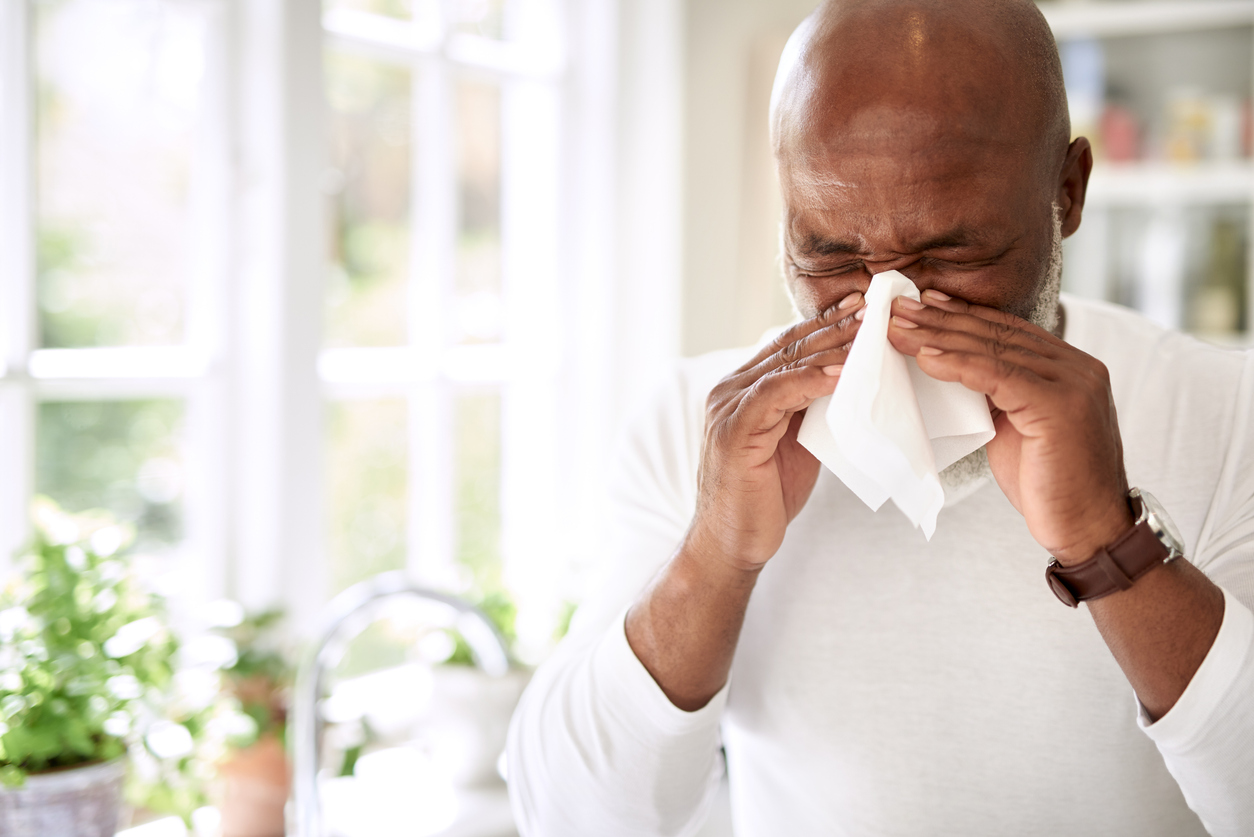
Indoor allergens can easily trigger symptoms for many seasonal allergy sufferers. Allergens are carried through the air and can be found on just about any surface around the house. It is impossible to keep a home 100% allergen-free, but there are certain things you can do to help reduce the number of allergens you’re exposed to.
Dusting
A great way to combat indoor allergens is to get rid of dust. Dust mites (one of the most common allergens) thrive in dust. Initially dusting can actually make things worse by kicking up the particles into the air. It is recommended to use a damp or treated cloth that attracts dust rather than scattering it, and to wear a dust mask when cleaning.
Vacuuming
Vacuuming once or twice a week can greatly control allergens. Similar to dusting, it can also push the particles into the air and cause issues for those with a dust mite allergy. A HEPA filter equipped vacuum can trap small particles and prevent them from spreading into the air.
Washing it Away
Dust mites tend to thrive in bedding, pillows, and throw rugs. And since we spend a significant amount of time using these items, it’s especially important to reduce allergens in these areas. Wash pillowcases, sheets, and blankets in water that is at least 130 degrees on a weekly basis and dry them in a dryer to kill dust mites.
Green Cleaning Products
Harsh chemicals found in many household cleaners can trigger symptoms for individuals with allergies and asthma. It may be helpful to switch to “green”, cleaning products that have mostly or only natural and plant-based ingredients. You can also make your own products using vinegar, baking soda, and lemon.
Reduce Pet Dander
The saliva, urine, and dander of our pets is a common allergen, but can be kept to a minimum by vacuuming frequently and washing your pet about once a week. You can also designate certain areas of the house as pet-free zones.
Prevent Mold and Mildew
Mold and mildew thrive in damp areas such as the bathroom and their particles that may become airborne are not healthy to breathe. Consider replacing wallpaper with tile or paint the walls with a mold-resistant paint.
After taking a shower or bath, the use of an exhaust fan or even towel-drying the shower or bathtub itself can help. Scrub away mold from tiles and bathroom surfaces and replace moldy shower curtains and carpeting immediately. You may want to run a dehumidifier to reduce moisture.
Keep Pollen Out
To prevent the potent allergen of pollen from entering your home, keep your windows and doors closed.
Pollen is usually emitted from plants in the early morning between about 5 a.m. and 9 a.m., so be conscious of tracking pollen inside during these times. Putting your clothes directly in the dirty hamper and taking a shower when you come home may also help.
Humidity Controllers and Air Purifiers
A balanced humidity in the house can make a big difference. Allergen particles are more likely to fly around if there’s too little moisture, while too much moisture promotes mold and mildew growth. It is best to keep the humidity at about 40%, which can be done with the help of humidifiers and dehumidifiers. Air purifiers can also be helpful in reducing allergens.
About Sine Insurance
At Sine Insurance Group, we are dedicated to providing you with custom tailored insurance policies to protect your assets. Our comprehensive packages have been expertly crafted to serve St. Louis and the surrounding areas for the past 25 years. For more information about our products, contact us today at (855) 700-0889.

